Industry Cooperation, Cybersecurity Driving DISA Success
Defensive Cyber Operations Symposium 2016
The SIGNAL Magazine Online Show Daily, Day 3 and Final Wrap-up
Quote of the Day:
“The longer cyber attackers are in, the harder they are to get out.”—Marty Roesch, vice president and chief architect, Cisco Security Business Group
After three days of presentations, speeches and panel discussions at the AFCEA 2016 Defensive Cyber Operations Symposium (DCOS), two concepts stood out: government and industry need to enter into a virtually symbiotic partnership to equip U.S. military forces with the necessary information technology innovations; and cybersecurity is the trump card for all those efforts. The success of these endeavors may determine whether U.S. forces prevail in a future conflict with any rising military powers.
The need for closer government-industry cooperation was a major topic of discussion throughout the symposium, held in the Washington, D.C., convention center April 20-22. Sprinkled within that discussion, and dominating the final day, was the need for new approaches to cybersecurity. In the discussions on cooperation, the dominant theme was that it would be the only way U.S. forces could receive the innovative information technologies they needed to combat increasingly sophisticated enemies. For cybersecurity, virtually every speaker and panelist agreed that it needed to be improved if those advanced information technologies were to serve the force effectively.
The once-overwhelming force superiority enjoyed by the U.S. military has dwindled dangerously at the hands of determined rival powers. Two countries in particular pose a significant threat, said Vice Adm. Jan E. Tighe, USN, commander, Fleet Cyber Command and 10th Fleet.
“Russia and China have a growing arsenal of warfighting capabilities specifically designed to challenge us,” she declared. Speaking of the cyber domain, she said, “Every day we fight to defend our network; every day we fight to stay ahead of our adversary.”
The Navy’s attack surface expands and contracts daily, the admiral stated. The expansion occurs when vulnerabilities are left unpatched and humans interface with networks without proper security procedures. To address the human factor, the Navy is educating its users to a higher level of understanding about hazards in cyberspace.
“We’re going take our information warfare capabilities and better integrate and leverage them across the Navy,” she declared.
That concern extends to the other services as well. A panel of service cyber experts called for greater cooperative efforts as well as new approaches to security training.
Lt. Gen. Kevin McLaughlin, USAF, deputy commander, U.S. Cyber Command, called for a cyber force that is agile enough to respond to problems, adding, “It is essential that we raise the security baseline across the entire department.”
In response, Maj. Gen. Sandra E. Finan, USAF, deputy chief information officer (CIO), Command, Control, Communications and Computers (C4) and Information Infrastructure Capabilities, U.S. Defense Department, said the department would like to see cyber basics across the entire force. “We’re trying to raise the cyber baseline of everyone in the services, but we’re not moving fast enough,” she stated. “The enemy is inside our loop—we need to go faster.”
Gen. Finan also stated that a “substantial set of initiatives” will be required to regain the advantage the United States once held. The Defense Department must partner more proactively and more quickly with industry, she added.
The private sector offers many solutions to cybersecurity challenges, one of which was outlined by an industry speaker. Marty Roesch, vice president and chief architect, Cisco Security Business Group, described how threat-based security built around automation can be a vital tool for faster detection and remediation.
“If we’re depending on operations teams and human brains to manage the complexity of our systems, we’re fooling ourselves,” he offered.
“Timeliness—time to detection, time to response—is utterly critical,” Roesch warranted. Unless intruders are detected early, they can embed their own backdoors, Trojan horses or other malware that can do their bidding far beyond the traditional attack period. “The longer cyber attackers are in, the harder they are to get out,” he emphasized.
The growing threat increasingly features ransomware, which is becoming more frequent. “Effective ransomware that can spread itself is going to be a huge market for the hackers,” he said, adding “The hacker economy is three to five times the size of the security industry.”
Cooperation in cybersecurity must extend beyond just industry, offered Terry Halvorsen, the U.S. Defense Department CIO. He noted that European allies are pursuing excellent approaches as they strive for cybersecurity.
“We have to continue to build partnerships—with industry, with our allies, with our allies’ industries,” Halvorsen stated.
In many cases, similar solutions are being pursued on both sides of the Atlantic, he observed. If the United States and its allies can develop common security, “it gives us an unbelievable warfare advantage and an unbelievable business opportunity,” he warranted. “We need identification that works among allies.”
Halvorsen did not pull any punches about the importance of cybersecurity. “We’re at war today in cyber. You in industry are at war today in cyber,” he stated. “The pace of change in cyber is what makes it different from every other war.”
That pace of change is the main roadblock preventing the military from keeping up with information technology development. Meg Whitman, president and CEO of Hewlett Packard Enterprise, said both government and industry will require cultural change, and government must change how it does business.
“Things are moving in technology much more rapidly than I’ve ever seen,” Whitman observed. “Often these [government] contracts feel like straight jackets to us and to your people [in government].”
Even waiting for just a five-year window will result in a missed technology trend, she continued. And, 10-year contracts do not work. After seven years, both sides realize nothing new has been delivered, and innovation has passed by the original technology goal.
“We have to change the way procurement is done,” Whitman stated. “Government is losing out on the best of industry.”
Halvorsen called for cultural changes in the government-industry relationship. “The technology is the really easy part,” he said, speaking to industry. “I’m not convinced you will get all the culture right.”
At the core is a strong partnership between government and industry. “Now it’s time to have a conversation about culture change—cyber culture, tech culture,” he emphasized. “The issue is how we in government look at industry and how industry looks at government. The partnership where we understand what industry is doing and industry understands government is a win-win.”
Halvorsen described many efforts underway to implement internal and process changes, but overall the concept of how to do business must be altered lest these efforts fall by the wayside. Government needs to listen to industry more, he allowed, and industry must be dedicated to working in new directions. He noted that Silicon Valley’s strength lies in its available finances as well as its focus on innovation.
“Everything we’ve ever done in [the Defense Department] and industry has involved lots of challenges,” Halvorsen observed. “We must be open to change in the process.”
In the view of the Defense Information Systems Agency (DISA), industry will hold the key to U.S. military information technology systems, according to its director. Gen. Alan R. Lynn, USA, who also is the commander, Joint Force Headquarters (JFHQ)-Department of Defense Information Network (DODIN), said, “We want the technology industry to partner with us to develop the next generation of military [information technology] services. We’re seeking more opportunities to provide CRADAs [cooperative research and development agreements] with industry.”
As part of this effort, DISA has undertaken a reorganization that becomes effective May 1. Tony Montemarano, DISA executive deputy director, told industry representatives that to do business with DISA, they have to understand DISA. He noted that DISA has two new contract vehicles in addition to its traditional set: SETI and Encore III.
Several longtime DISA officials have new responsibilities. Among them: Alan Lewis is taking over defense spectrum planning and allocation; Brig. Gen. Brian Dravis, USAF, is supporting the Pentagon and Joint Information Environment (JIE) technical implementation; John Hickey will have most of the activity associated with cyber; Capt. Al Holtslander, USN, will have cloud, mobility and Defense Enterprise Office System services development; and Jason Martin carries Win 10, EVoIP and DISANet.
Montemarano described some of the challenges facing the agency in this new era. “We are under really severe budgetary challenges. Each session gets worse,” he said. “We are contracting in the physical sense.”
And, hanging over these efforts and potential solutions is the cyberthreat. “The world has changed,” stated Gen. Lynn. “In cyber, it used to be almost like an intel game—a gentlemanly sport. People would try to break into your network real smoothly, real slowly.
“Today, they don’t care,” he continued. “They’re kicking in the doors, it’s loud and fast, it’s snatch and grab. The gloves are off.
“It’s cyberwarfare, and it’s daily. It’s happening on our networks,” Gen. Lynn declared.
The DISA director again reached out to industry for cybersecurity solutions. “If you have novel ideas of how to do encryption, we’re all ears,” the general stated. DISA’s efforts to build out the network, which are essential with the looming Internet of Things, will rely on the assured identity and security piece, he added.
Regardless of the size of the contractor, Gen. Lynn emphasized one key point. “Lastly, remember, you have to give me a good deal.”
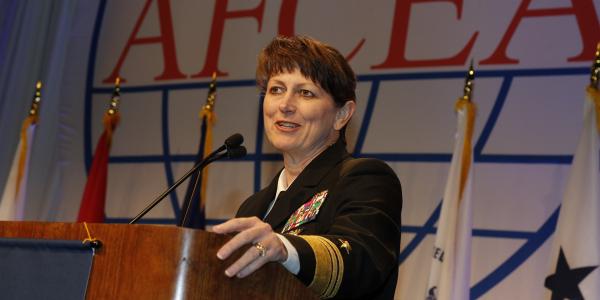
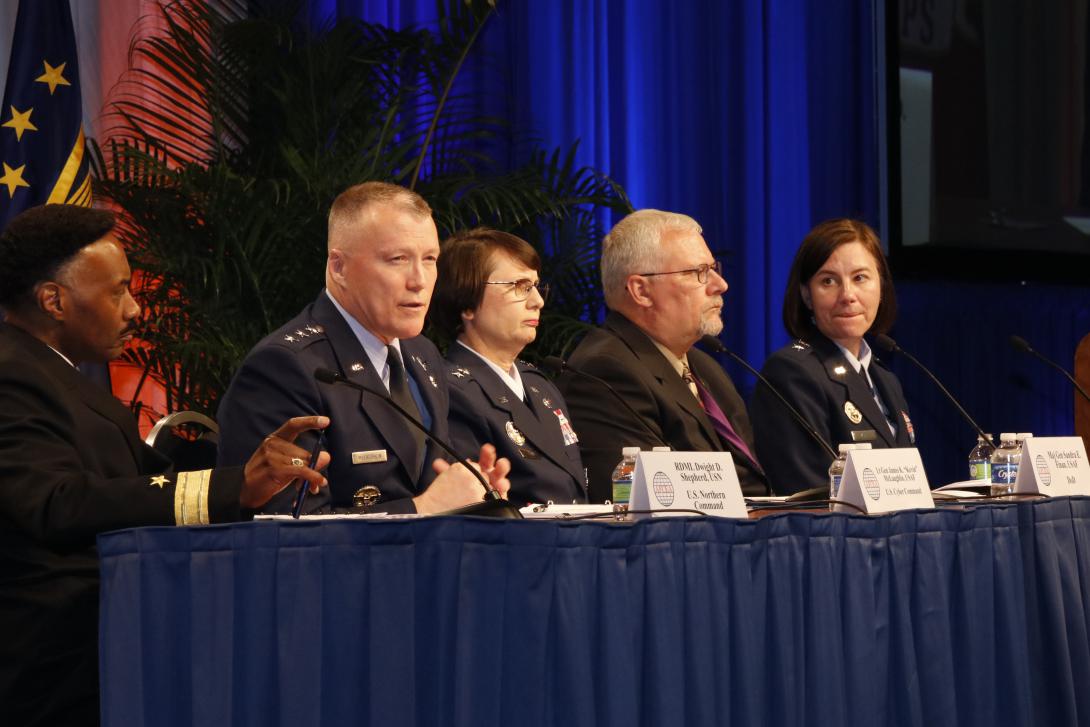
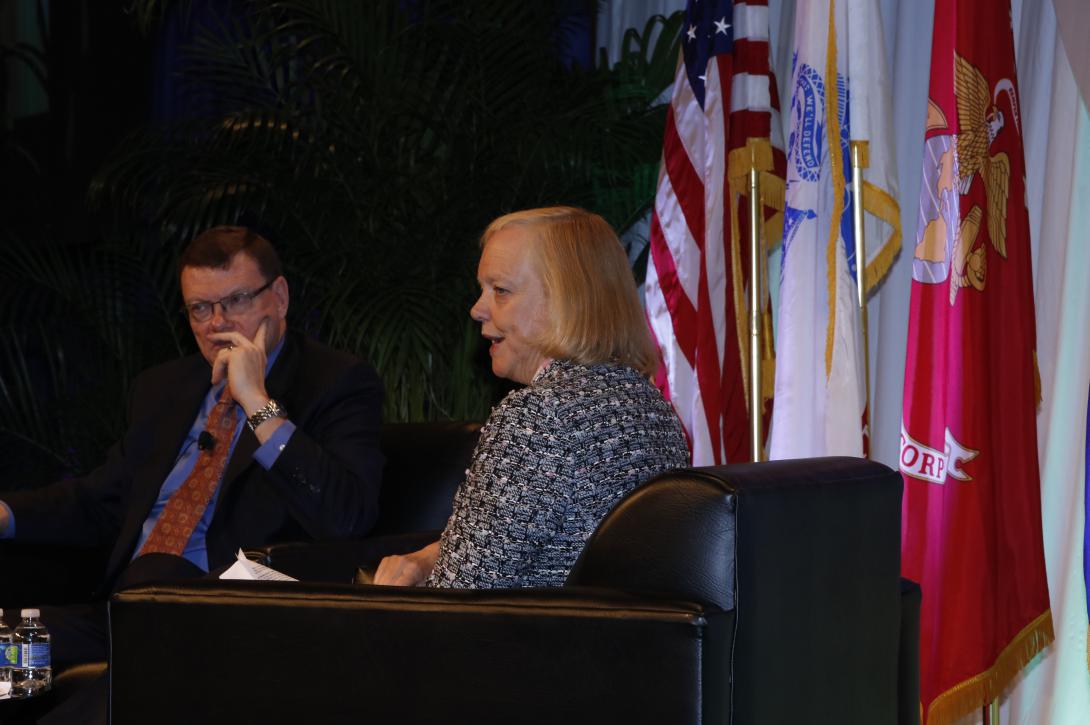
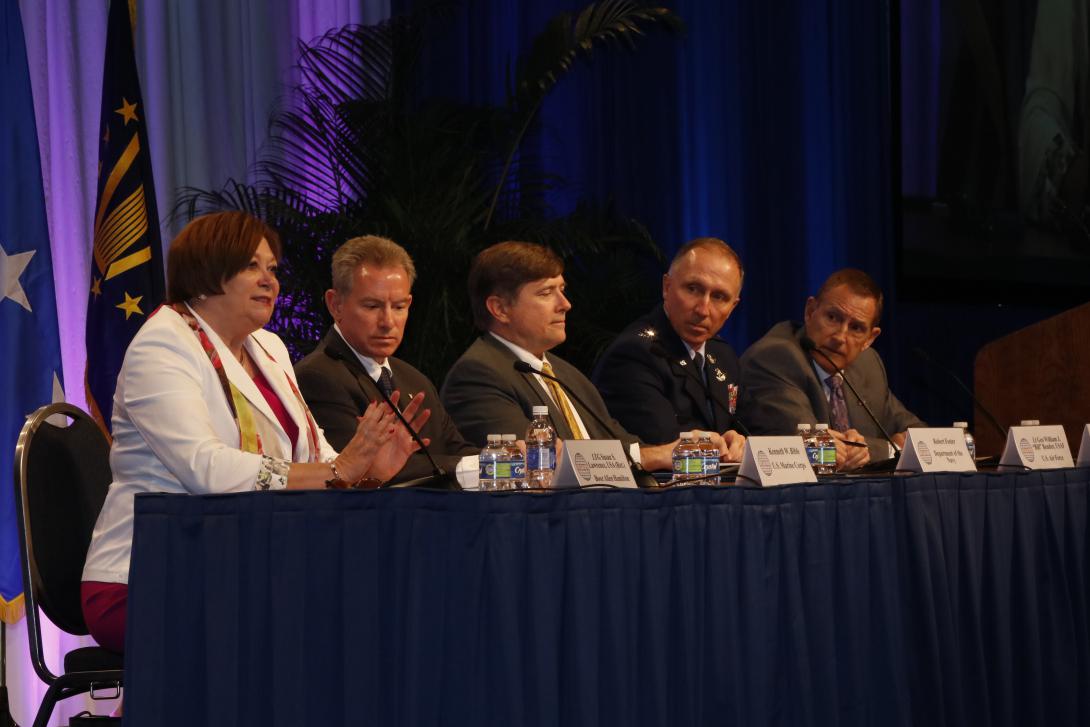
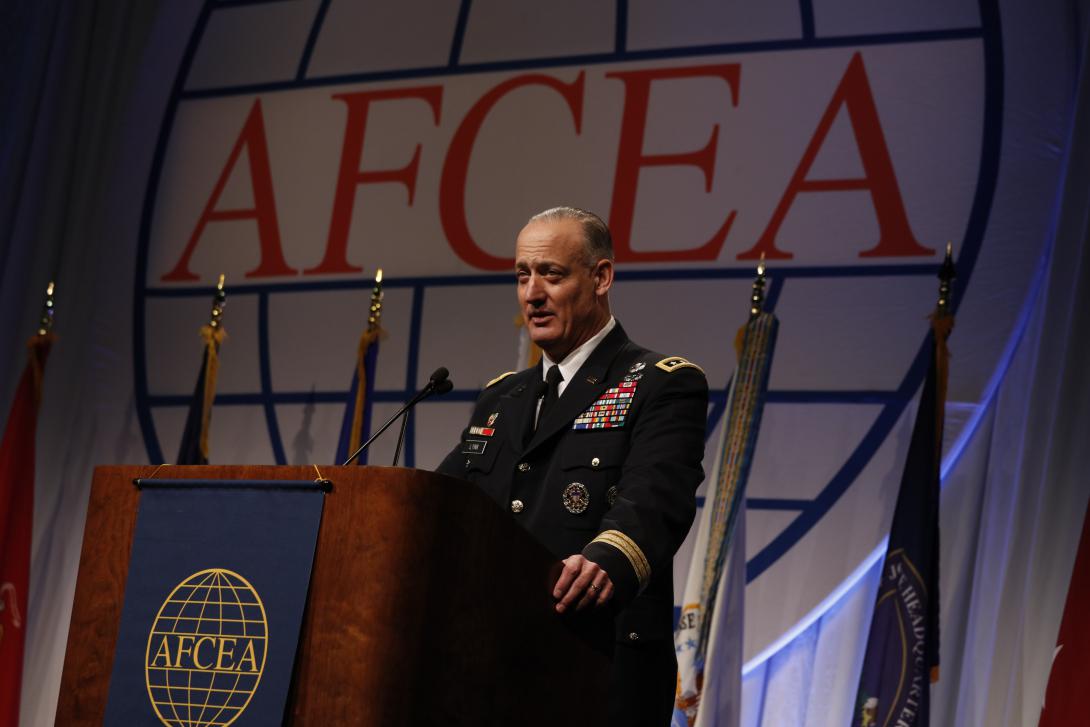

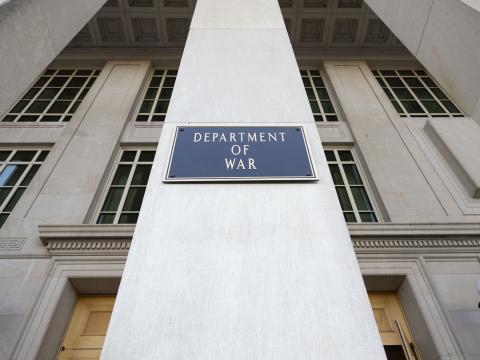


Comments